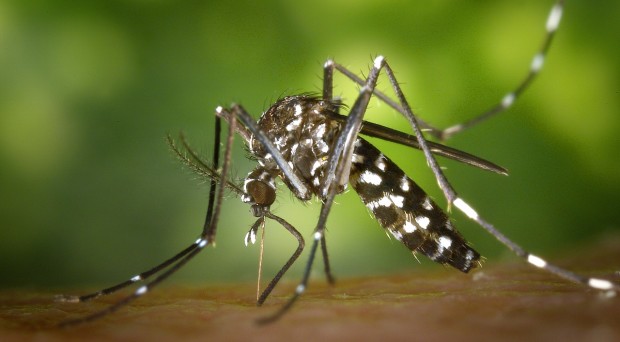
Aedes albopictus is a globally distributed mosquito vector responsible for the transmission of important arboviruses, such as dengue, yellow fever, and chikungunya viruses. The recent outbreak of Zika infection has become an international public health emergency.
Since no effective vaccines for protection against these viral infections, the mosquito control has been and will be one of the most effective measures to reduce the transmission.
Aedes albopictus as well as Ae. aegypti has been shown to be able to transmit Zika, although the vector competence was pretty low in both mosquito species. Since no effective vaccines for protection against these viral infections, the mosquito control has been and will be one of the most effective measures to reduce the transmission.
Pyrethroids have been utilized for mosquito control since the 1980s in China. The resistance to pyrethroids has been documented in several populations of Ae. albopictus in China. Due to the Dengue outbreaks in Hainan Island in the 1980s, intensive applications of pyrethroid ultra low-volume spray to kill flying adult mosquitoes have posed significant pressure on mosquitoes.
Pyrethroid resistance populations of Ae. albopictus have been present in Hainan since the 2000s. In Aedes aegypti, mutations in the gene encoding voltage-gated sodium channels (VGSC) are responsible for the knockdown resistance (kdr) to DDT and pyrethroids. However, no kdr alleles had been associated with pyrethroid resistance in Ae. albopictus.
We examined the larval susceptibility to deltamethrin, permethrin and beta-cypermethrin in five collections from Haikou city in Hainan Island
In this research paper, we examined the larval susceptibility to deltamethrin, permethrin and beta-cypermethrin in five collections from Haikou city in Hainan Island. Two populations in the city sites showed high level of resistance to the pyrethoids tested, and at codon F1534 of VGSC gene, three kdr mutant alleles were identified, namely, TCC(S), TGC(C) and TTG(L), in addition to wildtype TTC(F).
The kdr alleles were associated with the resistance phenotype. The kdr allele TTC(S) was dominant in the resistant individuals, with frequency of 31.4% in 493 examined specimens. In Ae. aegypti F1534C was the most common mutant allele in the pyrethroid resistant populations.
Further studies are underway to examine the genotypes of other possible mutation sites in the VGSC gene in Hainan populations. Aedes albopictus is an invasive species. There is the risk that resistant populations may disseminate to other continents globally.
Comments